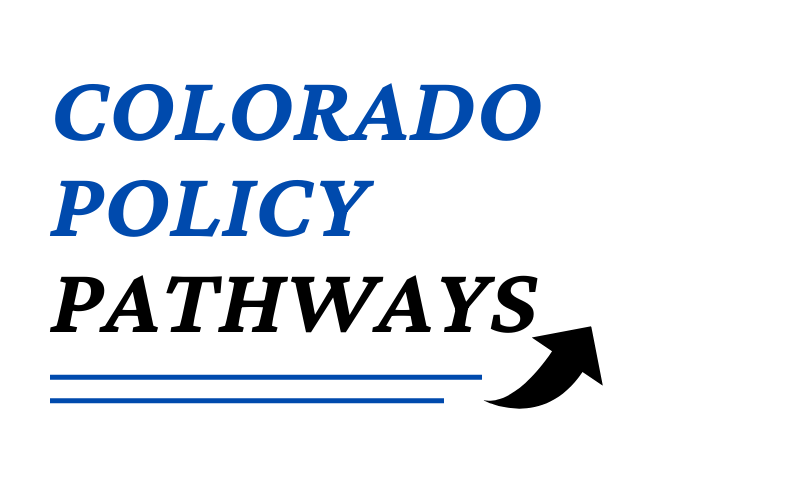It is hard to escape how eerily different everything around us has become. To be hit with rapid, far-reaching change that leaves us with uncertainty in every area of our lives is getting harder to bear. Yet down at the Capitol in Denver, broken budgets must be repaired and finalized.
It is in this unstable environment that some legislators have chosen to pursue one of the more controversial of laws, a sick leave mandate, to govern employer-employee relationships. Fragile businesses, struggling to survive, while not completely surprised, are disappointed, almost stunned.
Is anyone asking, do we need a sick leave law?
Sick leave may seem a minor adjustment for businesses. Afterall, most offer various leave options. It is difficult to assess how many workers have or do not have access to this particular benefit. Today’s trends move toward maximizing the freedom of employees to self-direct their leave benefits, leading to an expansion of categories. In addition, the proliferation of laws governing employee benefits has led to a confusing shift of labels for compliance. But results of SHRM’s 2019 Survey of Employers indicate that “paid leave for the purposes of sickness (including PTO for the purposes of sickness and unlimited leave)” is offered by 95% of the nearly 3000 responding firms. NFIB’s research indicates 73% of small businesses offer paid time off.
Signs that mandates retard this accelerating innovation are becoming more clear. One targeted question in a World at Work survey in partnership with PTO Exchange, found 84 % offer paid sick leave of those who may track sick leave separately in traditional paid time off programs. They note that the lack of growth of PTO Banks, an innovative benefit model that allows employees freedom to direct unused benefits toward other needs like education debt repayment or retirement funds, may be due to the growing number of state mandates.
There are now 350 different employee benefits up from about 60 just 20 years ago – a six-fold increase. Healthcare benefits continue to dominate. For an overview of today’s diverse landscape of employee benefits, see SHRM’s 2019 Survey of Employers.
Despite the lack of clear information, some are confident that the time is now to establish a state-wide sick leave mandate for broad purposes that will be defined in statute.
Keen to address today’s sense of urgency around COVID19, Senators Stephen Fenberg and Jeff Bridges, Representatives KC Becker and Yadira Caraveo, proposed a universal mandate on employers – SB205, Sick Leave for Employees.
Proponents lean on a recent survey that suggests that 40% of Coloradans have paid sick leave from their employer and 40% lack paid sick leave. The survey, conducted over a period of one week in April, has a sample size of 1000. Information includes demographics and attitudes of respondents, but missing are any variables to tell us about their employers or the nature of their jobs.
Given the disparity of results among reputable surveys, one must ask why. This leads to a much broader conversation about the benefits and risks of surveys, but suffice it to say, that it brings up many more questions than answers. The risk of overstating the essence of the problem matters because every mandate passed onto businesses compounds costs.
This significant bill and its alternatives deserve much more careful consideration and broader participation among those who will be impacted. And this abbreviated session impacted by the shutdown does not afford that opportunity.
In contrast to dynamic environments that allow for competing solutions in which those that are less effective can be discarded, a government-mandated employee benefit will hinder innovation. SB205 will permanently isolate and peg this one benefit and set unadaptable requirements while wrapping it in layers of language that introduce the threat of litigation.
For small independent businesses there is no good news about this bill.
“Sick Leave for Employees,” would create the “Healthy Families and Workplaces Act.” In some ways, it is remarkably similar to a paid family and medical leave mandate. While the pfml proposals we have seen are the typical social insurance models that were developed throughout the 20th century, these sick leave models are an unfunded mandate, referred to by proponents as “earned” benefits.
This is more simply, a mandated employer expense but with a mechanism to pace the accumulation or accrual of the hours and days. This small concession to businesses helps to pace the cost of absences and may allow them to better absorb the front-end costs of training for new employees. This also may alleviate some of the unequal impacts to those businesses that employ workers in industries plagued by high turnover.
What is in common, are the heavy legal implications imposed on the employer-employee relationships that are already burdened by compounding and overlapping laws. Few employers today operate without legal counsel close at hand, an expense that small businesses struggle to bear.
While sick leave does not offer the long-term 12-week leaves provided by pfml, both mandates introduce disruption to business operations by allowing for durations as short as one hour. And while pfml’s intermittent leave requires the employee become certified for a chronic condition or ongoing treatment, the sick leave bill allows much easier access with little accountability and will more likely hit businesses as unplanned absences. These challenge even those operations with sophisticated absence management systems in place, systems that are rarely a reasonable or affordable option for small independent operations.
Absences have real costs. They are surprisingly significant.
There are layers and layers of detail behind the delivery of seemingly simple products and services. Factors like safety, quality, timeliness, price, and artistry are all integrated in a unique way for each business. But this is what is key: behind the delivery that any success depends on, are interdependent systems that must be deftly navigated.
Absences are often unanticipated and introduce disruption to that process that is unique for every business. The costs of disruption are hard to quantify and track but are surprisingly significant. A 2008 survey of businesses by Mercer in partnership with Kronos Inc, global leaders in workforce management, set out to assess both the direct and indirect costs of absence. It concluded that these costs represent an average of 36% of base payroll.
A drive for uniformity across a diverse state and business landscape will bring disappointing outcomes.
The bottom line is that the law has an unequal impact across industry sectors and firm sizes. Small businesses risk-taking the biggest hit. It destroys agility and the process of discovering better solutions. And we can’t imagine a worse time to pass laws that increase regulatory burdens. The fallout from the COVID19 shutdown is only beginning to show, and one wonders when the dust settles, who will start the businesses of tomorrow.


 Expectations for Colorado Paid Family Leave Should be Tempered by the Potential Risks.
Expectations for Colorado Paid Family Leave Should be Tempered by the Potential Risks.